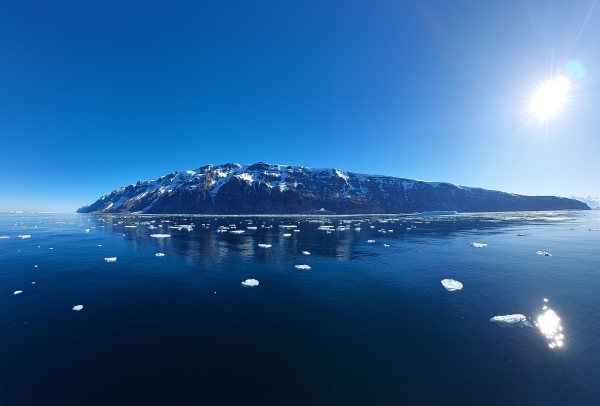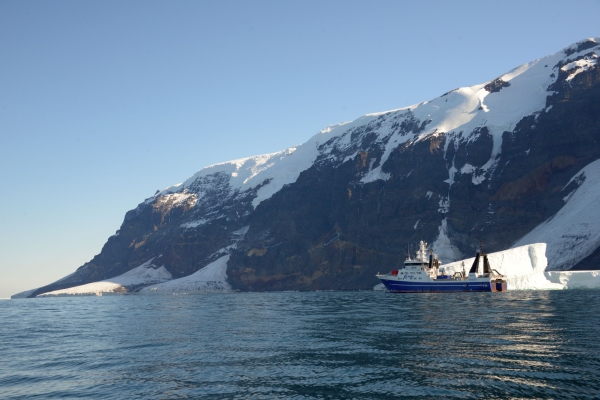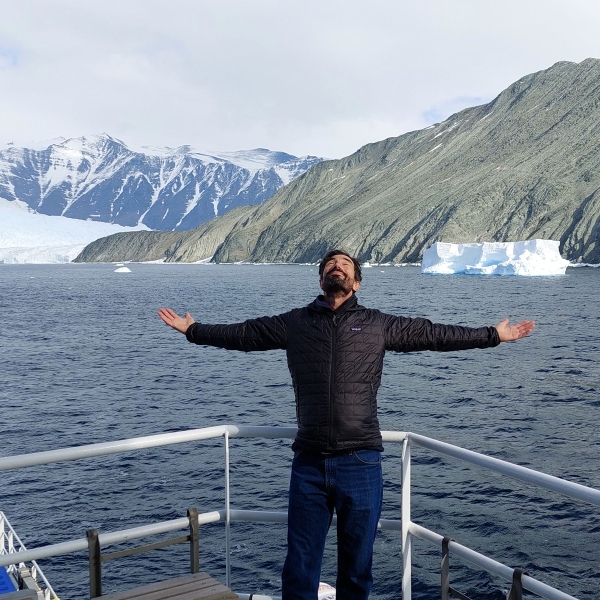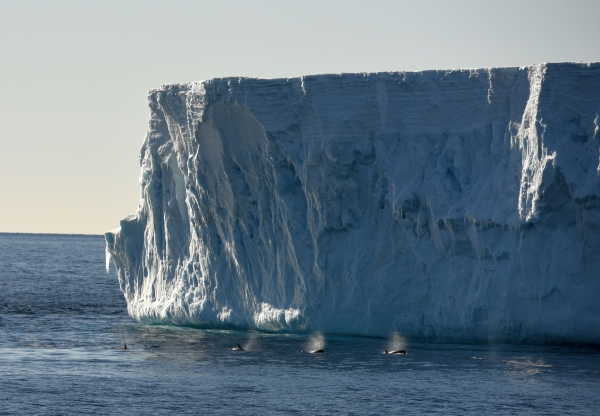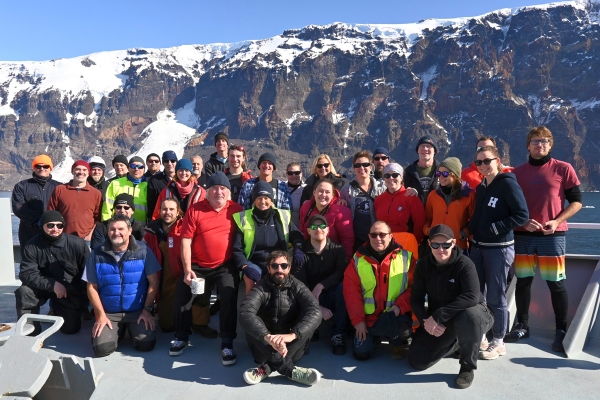Voyage success! Homeward bound after a busy last week
At 0900 17th February we crossed 60 degrees south, meaning we officially departed the Antarctic waters and are well on our way home. We are happily heading back from a highly successful trip to the frozen continent knowing that the data from this voyage will contribute to a broad body of science critically important to understanding the Ross Sea ecosystem and the impacts of climate change. We have made almost 300 equipment deployments on this voyage and from that, collected and processed: 15,000 litres of seawater, 25 hours of video footage, over 5000 biological specimens and many terabytes of digital data.
Over our last week we focused a lot of our attention on finding and understanding where and how fluids are released from the seafloor. What we’re looking for with the ship’s echosounders are discrepancies - density contrasts - in the seawater or small bubble plumes which indicate to use where we should focus our investigations. Fluids can be from a range of things: sub-glacial, freshwater, brackish or highly salty aquifers that connect to offshore areas, as well as deep crustal fluids or shallow gas systems. Whilst they might have a big impact on seafloor life, the presence and nature of them is virtually unknown in the Ross Sea. Therefore, we also don’t know how these impacts potentially could change with changing ocean temperatures. As we can only infer so much from the echosounder, we rely on understanding the geochemistry and trace metal signature in water samples from these areas to identify what these fluids might be. We’ll do this on return to New Zealand, so will have to wait a little longer for the answers!
Reflecting over the last month, the weather has been amazingly kind to us on this trip and we have had many days of calm seas and sunny skies. The scale and beauty of the northern Victoria Land Coast is mind blowing and has captivated everyone on board. Many of us have been reading about early Antarctic Explorers and being able to relate the landscape to their experiences gives a new appreciation for the challenges they faced.
As expected, we have had to be nimble and adjust our plans around changing sea ice conditions. One thing that has been an interesting challenge is the strong tidal currents in the Ross Sea. The tides are not well known as they are in New Zealand, but we experienced flows up to 3 knots which is a serious consideration when you are dangling equipment over the side of a ship!
On 14th February we marked our last day, and we had a glorious cloudless morning along Cape Adare. As we prepared to depart a pod of Orca cruised past and then another and another. We must have had upwards of 50 orcas within sight of the ship as we started the nine-day transit back to Wellington. Now, three days into that trip, it’s nice to hold onto that moment because most of the time its grey and foggy through the Southern Ocean! I’m sure that memories, photographs, and a huge amount of data to process back on terra firma will keep it in everyone’s mind for a long time to come.
Voyage leader, Dr Joshu Mountjoy.


